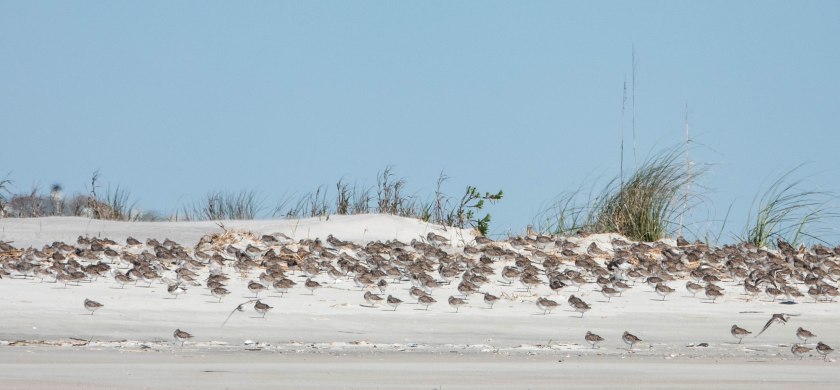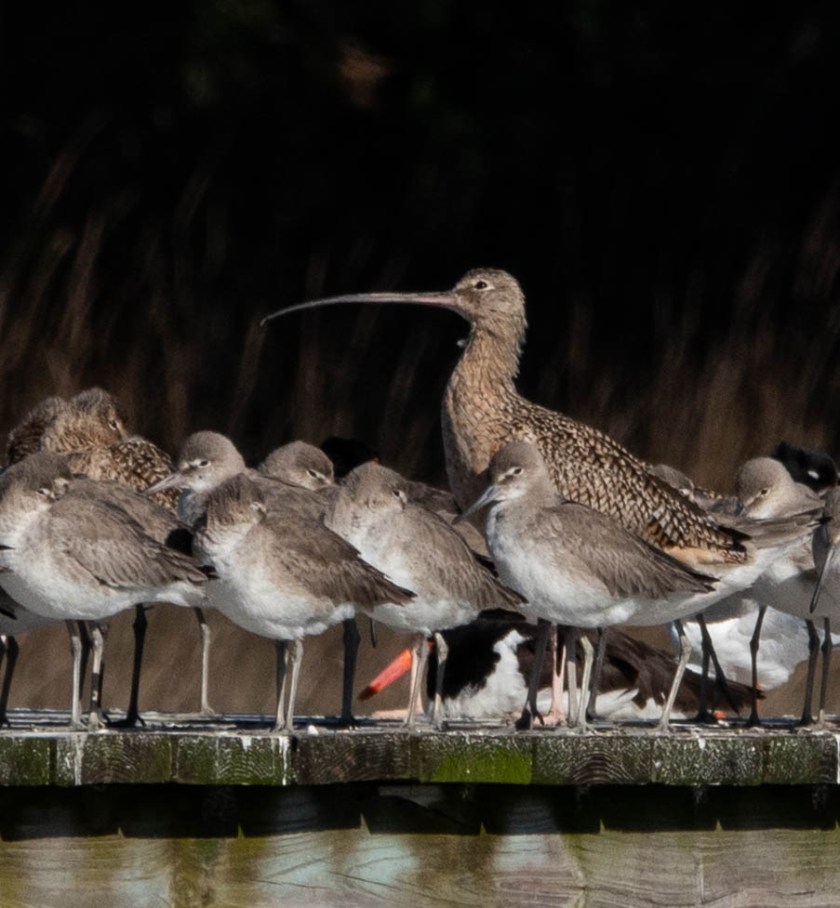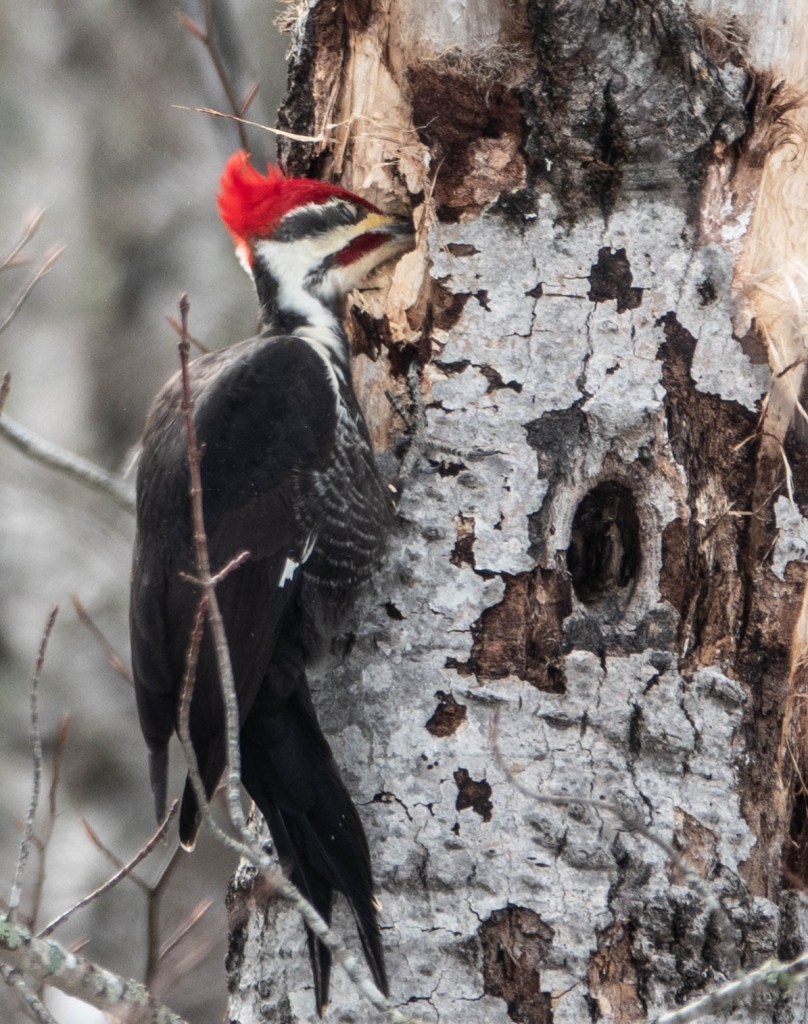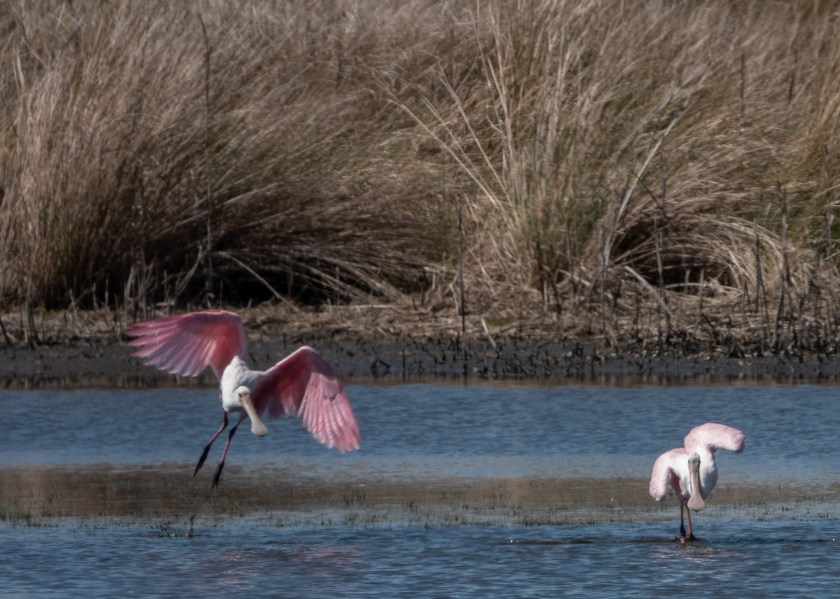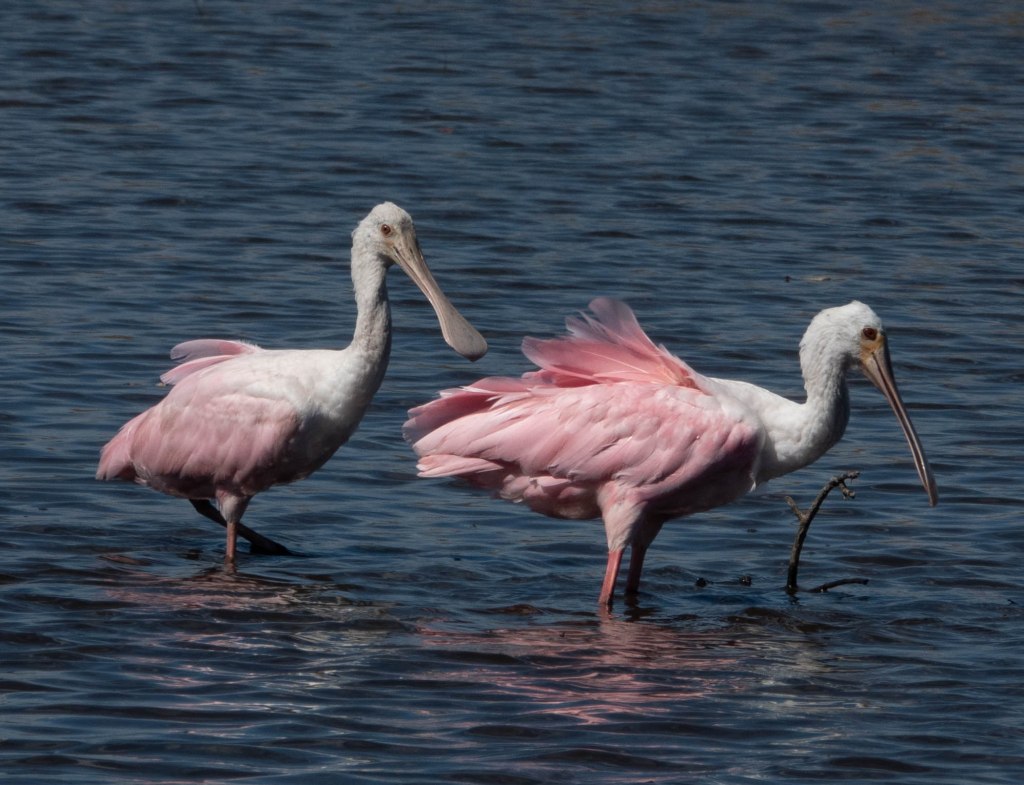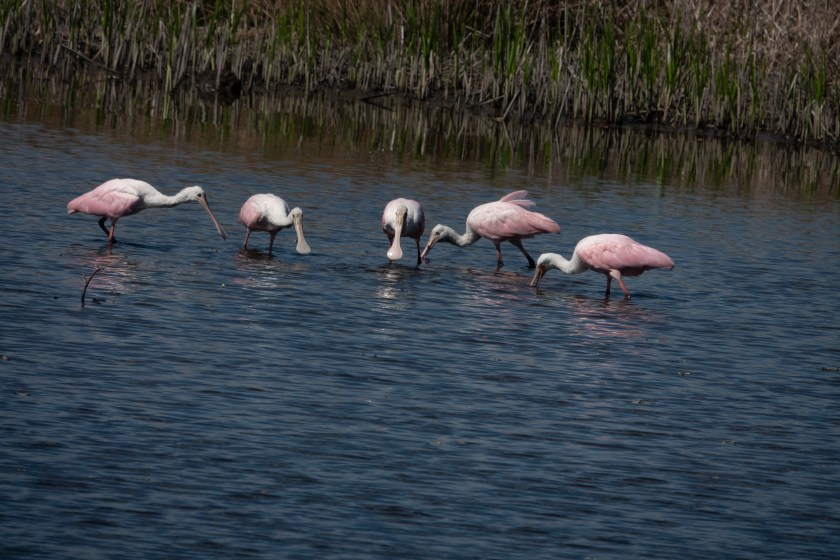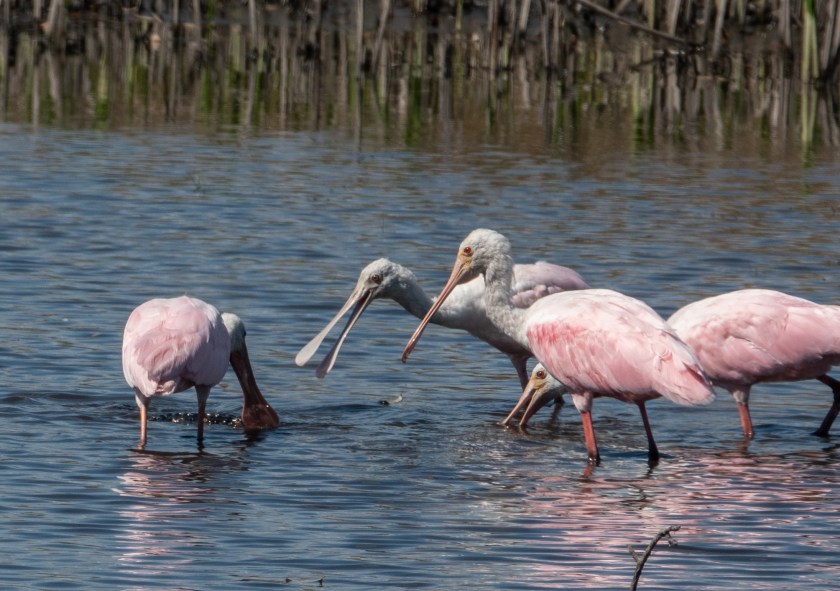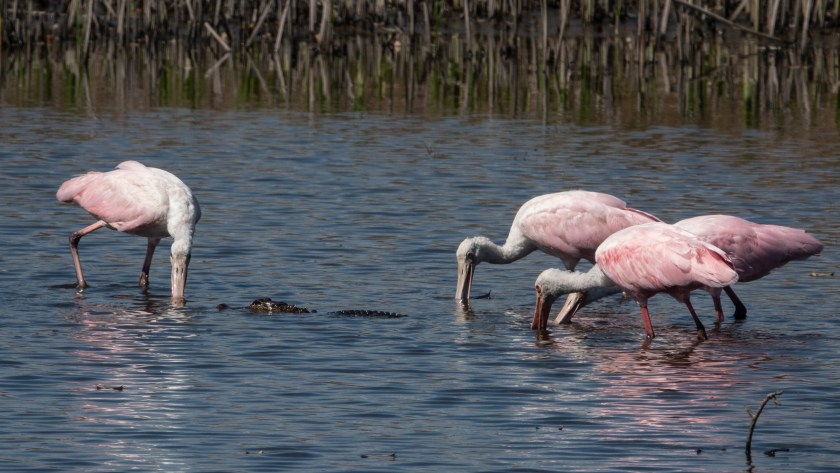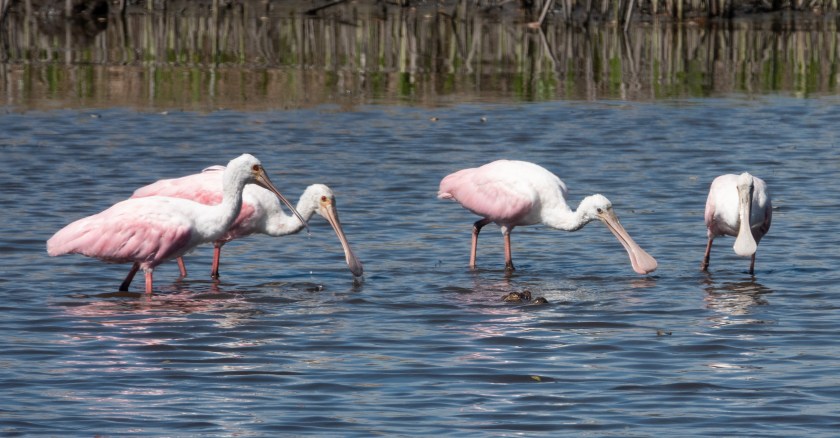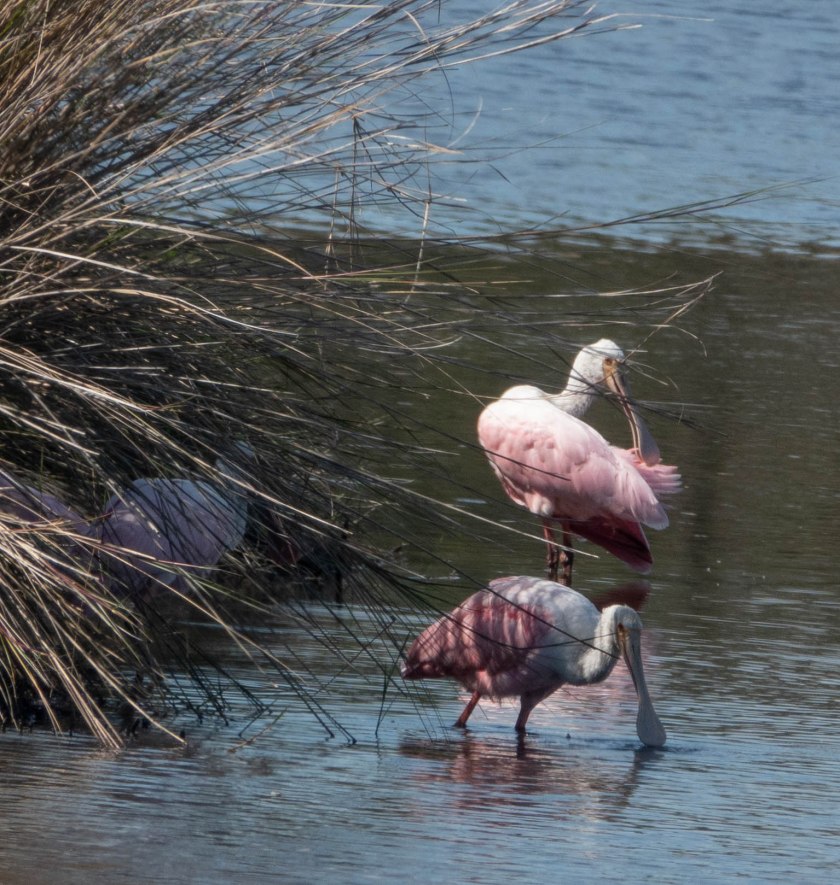Every now and again the stars align.
The other morning, I had tied my long-suffering dog to a tree and crept quietly to the shoreline, stopping behind some small trees. Nothing. Then in the distance I saw a V-shaped wake: coming straight at me, so fast it created a bow wave all its own, was my beaver.

It curved gently to the left, slowed, and headed straight for the shoreline, without noticing me.

I realized it was going to get out of the water, and I switched to movie mode. To my delight, I realized I was watching it making a scent mound. Beavers scrape up leaves, grass, any vegetation either from the bottom of the pond, or on the shoreline (as here). Then they deposit castoreum scent from their castor sacs, and also secretions from their anal glands. This marks their territory, and tells other beavers if they are family, near neighbors, or unknown. Watch what this beaver does; it is very quick, and you may need to watch it twice. (There is also an elegant dive at the end.):
Beaver are vulnerable out of the water, which is why they don’t waste any time. Notice that the beaver first makes the mound, then lowers its bottom onto it. Dogs, on the other hand, first defecate, then cover it with soil.
And here is the grassy heap he/she leaves behind (both sexes do this, but males do it more!). The water is at top right, and the mound of dead grass is right by the water’s edge. I bent down and tried to smell the castoreum (after all, I’ll never get a fresher chance than this) , but no dice.

Then he (or she) returned to the water:

In the afternoon, I was back, palely loitering behind a scruffy tree, when a huge shape swooped down and across the pond. Bald eagle. It went up into a tall pine, and I think it had something it was eating, hard to tell from so far away. But then, to my delight, it flew down and landed on a perch thoughtfully provided by the morning’s chief actor, the beaver, or one of its relatives..
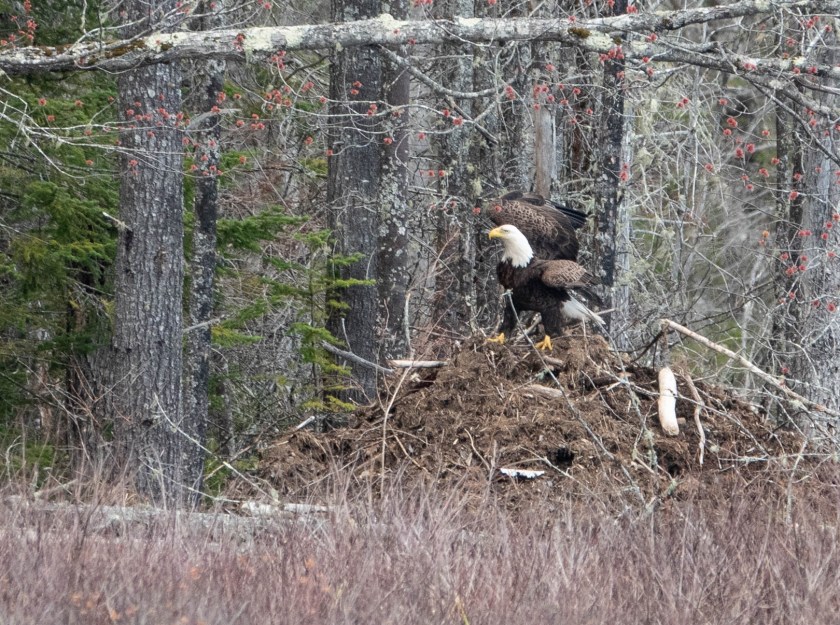
Beaver mounds are excellent vantage points, and this eagle settled down for a few minutes, still very far away, but in full view. It stretched and organized its wings:
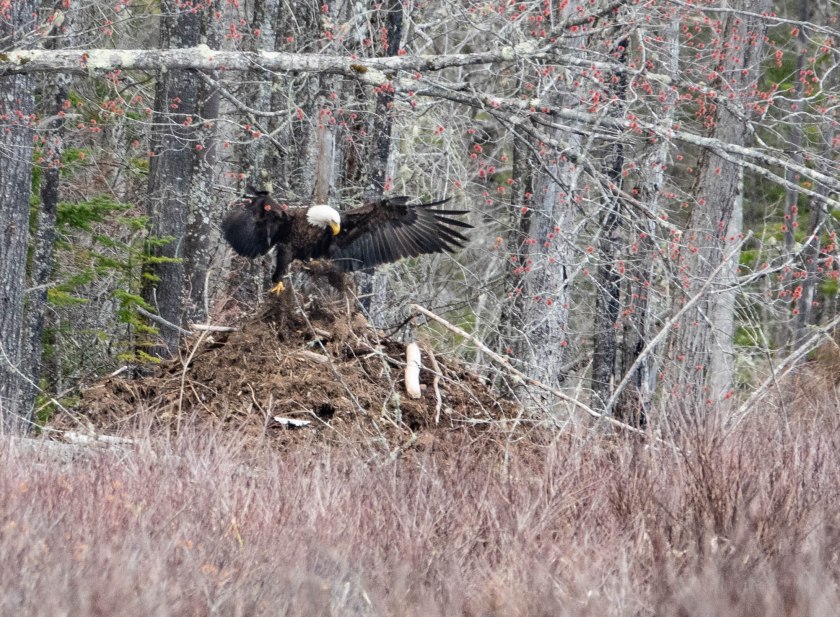
then took a patrician pose, gazing out over the pond:

After a while something caught its eye. It took off:

and rocketed back low across the pond, as if locked onto a target:

I realized it was aiming for two terrified ducks, which rose in a panic (the goose in the background didn’t budge.)
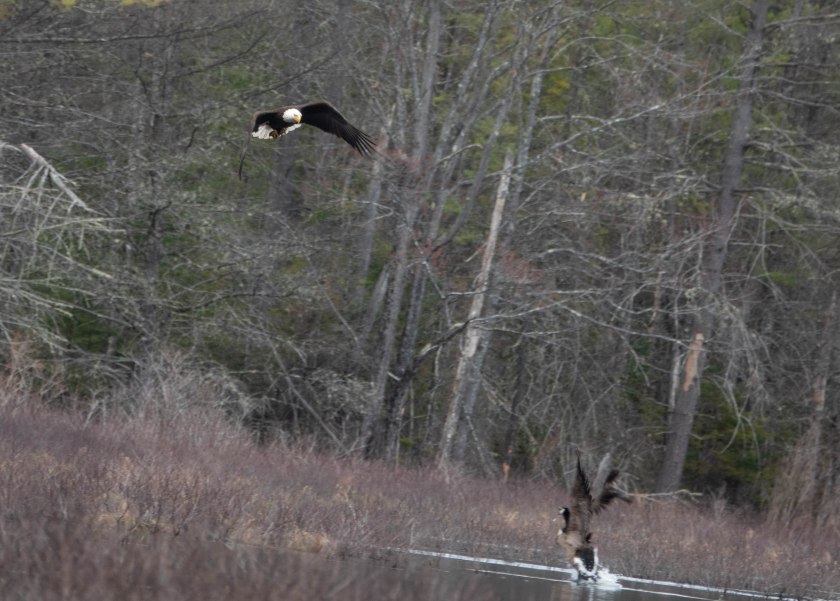
The ducks had good reason to be scared. Bald eagles will stoop onto waterfowl, though their success rate is apparently low, so this rather feeble attempt may be typical! It never did dive on them, just flew away, taking its magic with it.


